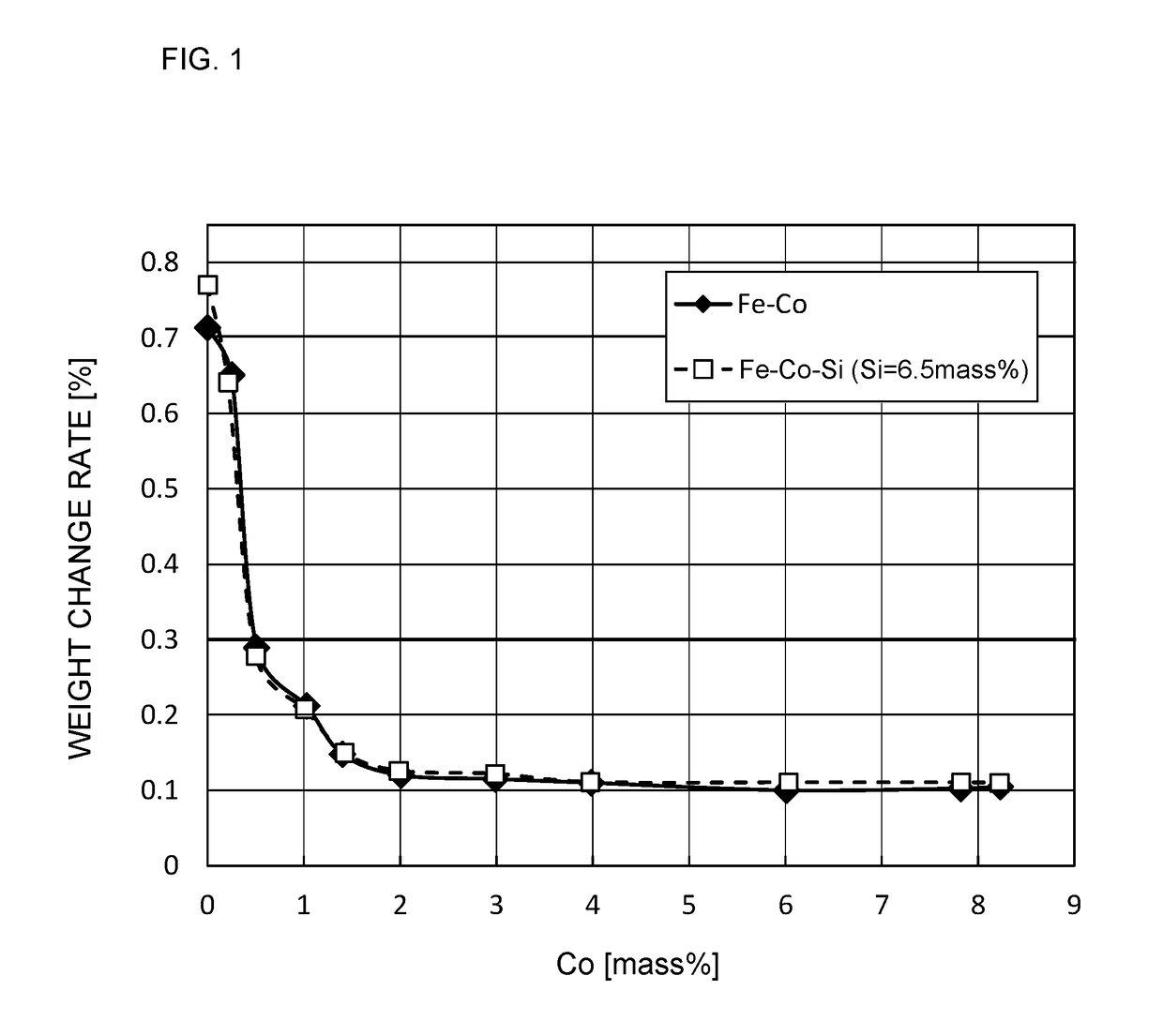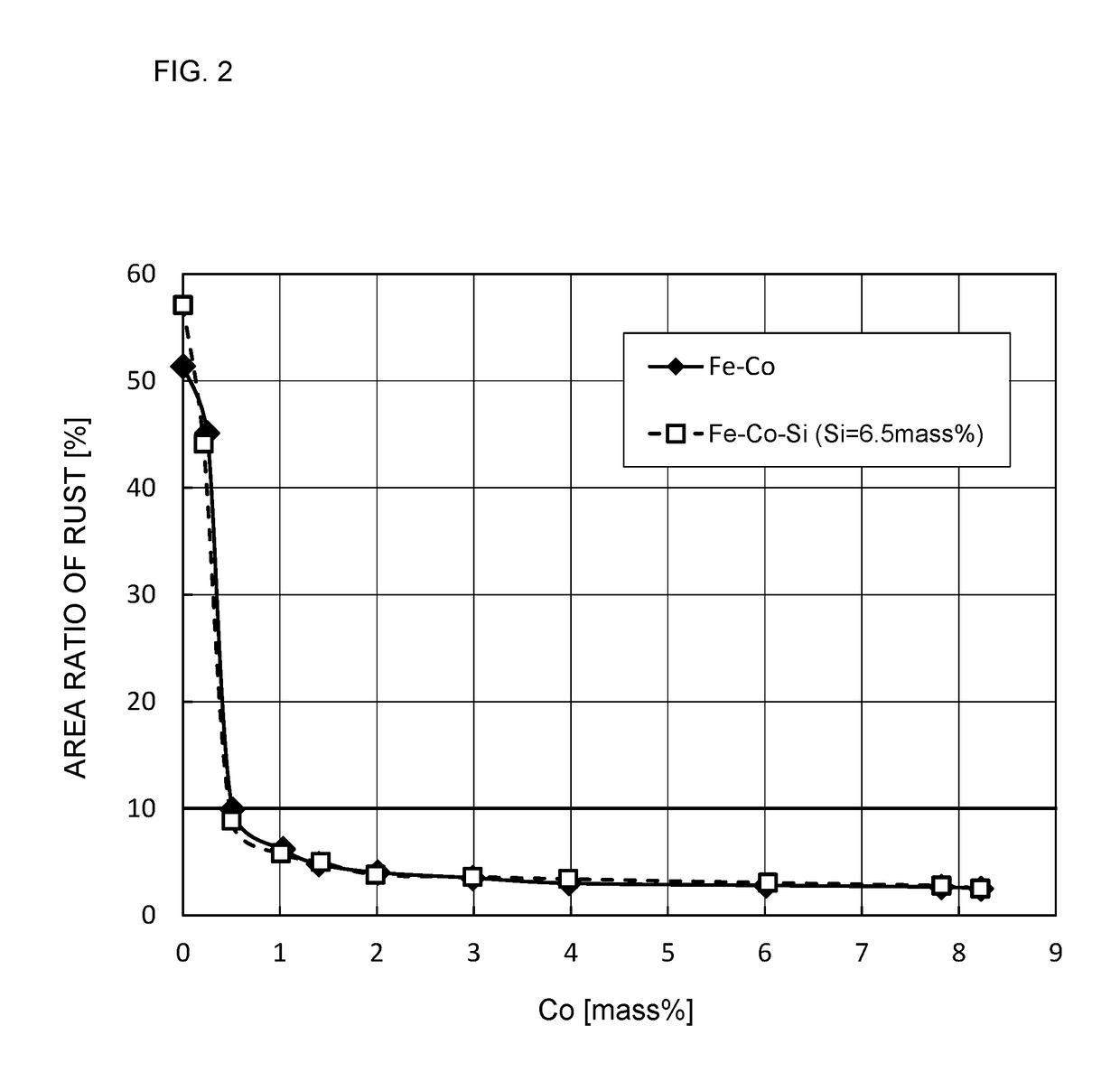Soft magnetic metal powder and dust core
a metal powder and dust core technology, applied in the direction of magnetic bodies, cores/yokes, transportation and packaging, etc., can solve the problems of reducing the insulation property and corrosion resistance of the dust core after being pressed, and the film may be peeled, so as to prevent the progression of corrosion, improve the corrosion resistance, and prevent the effect of rus
- Summary
- Abstract
- Description
- Claims
- Application Information
AI Technical Summary
Benefits of technology
Problems solved by technology
Method used
Image
Examples
experimental example 1
[0056]First, ingots, chunks (blocks), or shots (grains) of a simple substance of Fe and a simple substance of Co were prepared as raw materials. Next, the raw materials were mixed and housed in a crucible arranged in a gas atomizing apparatus. Then, in an inert atmosphere, the crucible was heated to 1600° C. or more by high-frequency induction using a work coil arranged outside the crucible, and the ingots, chunks, or shots in the crucible were molten and mixed to obtain molten metals.
[0057]Next, the molten metals supplied from a nozzle arranged in the crucible so that a linear and continuous fluid was formed were collided with a gas flow of 1 to 10 MPa to be droplets and rapidly cooled at the same time, whereby soft magnetic metal powders composed of Fe—Co alloy particles were manufactured.
[0058]The obtained soft magnetic metal powders were sieved to adjust their particle size, and soft magnetic metal powders whose average particle size were 25 μm were obtained.
[0059]The obtained s...
experimental example 2
[0071]Powder samples were manufactured in the same manner as Experimental Example 1 and evaluated with respect to composition and powder property in the same manner as Experimental Example 1, except for adding a simple substance of Fe and a simple substance of Co as raw materials and having an Fe—Co—Si alloy with a simple substance of Si. Table 3 shows the results.
[0072]Samples of dust cores were manufactured in the same manner as Experimental Example 1 using soft magnetic metal powders of the Fe—Co—Si alloys manufactured in the above, and were evaluated with respect to magnetic core property in the same manner as Experimental Example 1. Table 4 shows the results.
TABLE 3PropertiesMagnetic propertiesSaturationCorrosion resistanceCompositionmagnetizationWeightDeterminationFeCoSiof powderCoercivitychange rateof corrosion[mass %][mass %][mass %][emu / g][A / m][%]resistanceComp. Ex. 11abal.0.000.52213.87380.695X (bad)Comp. Ex. 12abal.0.250.57213.87550.649X (bad)Example 11abal.0.530.55214.17...
PUM
 Login to View More
Login to View More Abstract
Description
Claims
Application Information
 Login to View More
Login to View More - R&D
- Intellectual Property
- Life Sciences
- Materials
- Tech Scout
- Unparalleled Data Quality
- Higher Quality Content
- 60% Fewer Hallucinations
Browse by: Latest US Patents, China's latest patents, Technical Efficacy Thesaurus, Application Domain, Technology Topic, Popular Technical Reports.
© 2025 PatSnap. All rights reserved.Legal|Privacy policy|Modern Slavery Act Transparency Statement|Sitemap|About US| Contact US: help@patsnap.com


